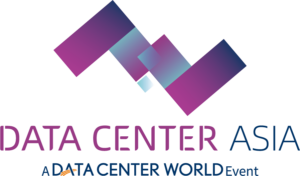Energy use can be reduced by optimizing server utilization, deploying energy-efficient hardware, implementing advanced cooling techniques such as hot/cold aisle containment, using renewable energy, and employing monitoring and AI-driven management systems to reduce waste and improve efficiency.

Join Data Center Asia Malaysia 2025
Data Center Asia Malaysia 2025 is your gateway to Southeast Asia’s dynamic data center market. Connect with operators, cloud providers, and technology innovators, attend practical seminars, and explore solutions in energy efficiency, AI, and 5G to accelerate your digital initiatives.Secure your spot as a visitor or exhibitor!
Understanding Energy Consumption in Data Centers
Data centers are energy-intensive facilities due to the continuous operation of servers, storage devices, networking equipment, and cooling systems. As digital transformation, cloud computing, and AI workloads expand, energy consumption grows, impacting operational costs and environmental sustainability. Reducing energy use is therefore crucial to maintain efficiency, lower expenses, and minimize the facility’s carbon footprint.
Optimizing IT Equipment
One of the first steps in reducing energy use is optimizing IT equipment. Modern servers, storage systems, and networking devices are designed to consume less power while maintaining high performance. Consolidating workloads, virtualizing servers, and replacing older hardware with energy-efficient models can significantly lower energy consumption without affecting computing capacity.
Efficient Cooling Strategies
Cooling is a major contributor to a data center’s energy use. Employing efficient cooling strategies such as hot and cold aisle containment, liquid cooling, and free-air cooling can reduce energy demand. These methods minimize the mixing of hot and cold air, improve airflow, and allow servers to operate at optimal temperatures while consuming less electricity.
Power and Energy Management
Data centers can further reduce energy use through intelligent power management systems. Uninterruptible power supplies (UPS) with high efficiency ratings, power distribution units (PDUs) with monitoring capabilities, and energy-aware scheduling of workloads help minimize wasted energy. Real-time monitoring and predictive analytics can adjust power distribution and cooling based on demand, improving overall energy efficiency.
Leveraging Renewable Energy
Incorporating renewable energy sources such as solar, wind, or hydropower can offset traditional electricity consumption. Many modern data centers are integrating renewable energy into their operations, either directly or through green energy procurement, which not only reduces carbon emissions but also lowers long-term energy costs.
Designing for Scalability and Efficiency
Data center design plays a critical role in energy efficiency. Modular layouts, optimized server density, and strategic placement of cooling and power infrastructure allow facilities to scale efficiently without unnecessary energy waste. Future-proofing the design with energy-efficient technologies ensures that the data center remains sustainable as computing demands grow.
Conclusion
Reducing energy use in data centers requires a comprehensive approach that includes optimizing IT equipment, implementing efficient cooling, managing power intelligently, leveraging renewable energy, and designing for efficiency. By adopting these strategies, operators can lower operational costs, enhance sustainability, and maintain high performance, all while supporting the growing demands of cloud computing, AI, and digital services.
